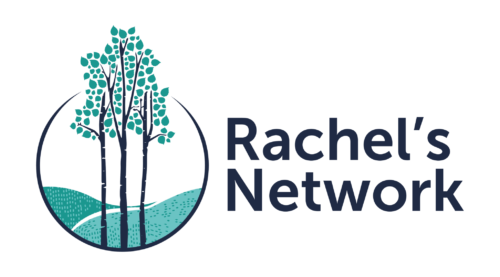By Communications and Advocacy Director Erica Flock
We need a staggering amount of money to finance solutions to climate change. The World Economic Forum has said that we’ll need to collectively invest at least $5.7 trillion per year for things like renewable energy, efficient buildings, transit, sustainable agriculture, and water-saving technologies. Where are we at now? $632 billion, or 11 percent of where we need to be.
Retirement funds are one tool we could use to tackle the problem. In the US alone, about $30 trillion is sitting in retirement accounts. Despite the fact that more employees are showing an interest in Environmental, Social, and Governance (ESG) criteria and Socially Responsible Investing (SRI), only three percent of plans offer sustainable funds. There’s no excuse for employers not to offer these funds—they’re plentiful, they perform well, and they improve employee engagement.
Sounds nice in theory, but what does switching to a more sustainable 401k actually entail? We had a chance to put theory into practice here at Rachel’s Network in 2019. We learned a lot in the process and think there are important takeaways for other organizations.*
Although Rachel’s Network has environmental protection in its mission, our 401k transition was also precipitated by high fees and poor customer service through our old vendor. This experience isn’t uncommon. John Oliver talked about the questionable practices of his own 401k provider, John Hancock, on his show Last Week Tonight. Our own experience wasn’t so different. It felt like our custodian was taking advantage of us by charging us a lot for mediocre services.
So we launched a search for a better provider and soon learned how complicated the 401k space really is. Decades ago, employees earned a pension from their employers for retirement. As pensions disappeared after Congress passed the Revenue Act of 1978, a complicated universe of 401k providers sprung up in their place. Saving for retirement became less straightforward, with more room for dubious financial players to prey on confused customers. Untangling this universe became our mission.
First, we learned that it wasn’t just a matter of switching custodians (investment companies like John Hancock). We had to consider things like recordkeepers, third party administrators, fiduciaries, payroll providers, and advisors. And many of these vendors like to work with specific other vendors. We ended up interviewing a lot of different companies and keeping track of their services and costs in a spreadsheet. For a small organization like ours, this wasn’t trivial.
But, the more people we talked to, the better we grasped the 401k universe, and the better our ability to quickly reject companies that didn’t meet our needs.
We were looking for several things during this process: a plan that offered reasonable fees, both for our organization and the employees; responsive customer service; straightforward pricing; and of course, numerous ESG (particularly fossil fuel free) mutual funds.
Usually when working with a custodian, they’ll provide a pre-set fund menu that the employer has to accept in full. In theory, this is a good idea—trust the professionals who know what they’re doing, right? But when we scrutinized our existing fund menu, we found a lot of expensive, poorly-performing funds. Custodians may be professionals, but they don’t always have your best interest at heart. Unless an advisor is a fiduciary, there’s nothing to keep them from selling you a product designed to make them money. On top of that, there are very few ESG options in most pre-set menus.
For these reasons, we insisted that our fund menu be customizable. That meant that our organization (or an advisor of our choosing) could handpick the funds in our menu. Although the concept of sustainable investing still needs better oversight, there are a plethora of ESG options in every investment category that weren’t available just five years ago. We whittled our menu down to about 20 funds that met three criteria: 1) reasonable fees (ideally under 1%); 2) good performance and 3) fossil-free or sustainability mandate.
As You Sow’s screening tools make it easy to find funds invested in companies with better-than-average records on issues like deforestation, gender equality, and fossil fuels. We cross-referenced funds we found here with Morningstar’s performance ratings and arrived at a menu we’re happy with. Now our employees can invest in funds that are better for their own financial future and the planet.
We also hired an advisor specializing in ESG to evaluate our funds, keep track of our menu going forward, and educate our staff. A comparatively small portion of ESG advisors actually work on retirement plans, but we found one using this helpful directory of advisors from The Forum for Sustainable and Responsible Investing.
These actions brought our retirement plan in alignment with our fossil-free reserve fund through Amalgamated Bank.
Organizations like Just Futures and the Sustainable Economies Law Center have been looking at even more innovative ways to align nonprofit missions with employee benefits, with a focus on community wellbeing and social justice. We also need the federal government to better regulate ESG funds to prevent greenwashing. Until then, nonprofits will have to go the extra mile to provide their employees better options. Ultimately, improving a nonprofit’s 401k or 403b plan shouldn’t require jumping through this many hoops, but we can help change the system from the bottom up.
Have you successfully transitioned your organization’s retirement plan? Let us know about it in the comments below.
* This blog post is for information purposes only. It is not and should not be regarded as investment advice or as a recommendation regarding a course of action. Consult with a certified financial planner before undertaking any changes to your retirement plan.
Photo by micheile dot com on Unsplash



Erica, was finally able to read your piece. Thank you for it and the effort to sustain an excellent staff. Rachel’s Network, more than most has the heart and knowledge to support this most necessary plan. What a commendable model .
Appreciate that time to create it.
Appreciate your time to share it.
Best wishes